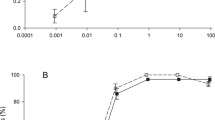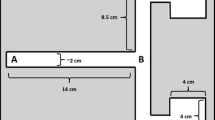Summary:
In the galleries of Macrotermes a differentiated effect of communication was observed, by which the outward running termites could apparently distinguish between going to a feeding place or to virgin ground of exploration. The aim of this study was to investigate trail-activity in the two situations and to find out whether pheromone trails may transmit specific information about the destination of a trail.¶A new device was developed in which running termites could build up their pheromone trails in the context of their natural activity. Such trails were then bio-assayed with another independent group of termites of the same colony, also during their natural activity within an experimentally defined context of behaviour.¶In the described laboratory experiments, it was shown, that termites of Macrotermes subhyalinus, circulating between the nest and an arena filled with soil (situation of exploration), always laid pheromone trails on the substrate. If two channels coming out from the nest led into two identical arenas, an asymmetry of activity was often observed towards the two channels. This asymmetry was also found in the trail bio-assay when comparing the two trails. If one of two paths, however, led to a foraging arena, this path became significantly more active. In this situation the trail bio-assay yielded astonishing results: if the test termites were in the process of exploration, the trail, that previously led to the soil arena, appeared to be significantly more attractive than the foraging trail, even though it was less frequented during the phase before testing. On the other hand, if the test termites were part of a foraging population, the trail which led previously to the food was dominant.¶These results show that pheromone trails in Macrotermes subhyalinus may include both quantitative and qualitative components. The reaction to such information on the trail varies depending on the motivational context of the receivers.
Similar content being viewed by others
Author information
Authors and Affiliations
Additional information
Received 5 July 1999; revised 16 December 1999; accepted 14 February 2000.
Rights and permissions
About this article
Cite this article
Affolter, J., Leuthold, R. Quantitative and qualitative aspects of trail pheromones in Macrotermes subhyalinus (Isoptera, Termitidae). Insectes soc. 47, 256–262 (2000). https://doi.org/10.1007/PL00001712
Issue Date:
DOI: https://doi.org/10.1007/PL00001712




